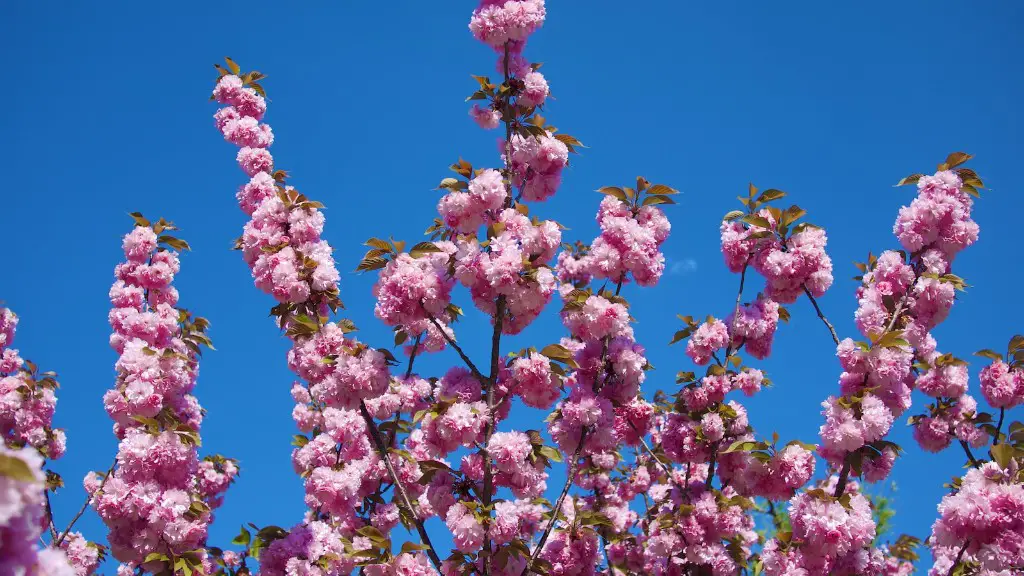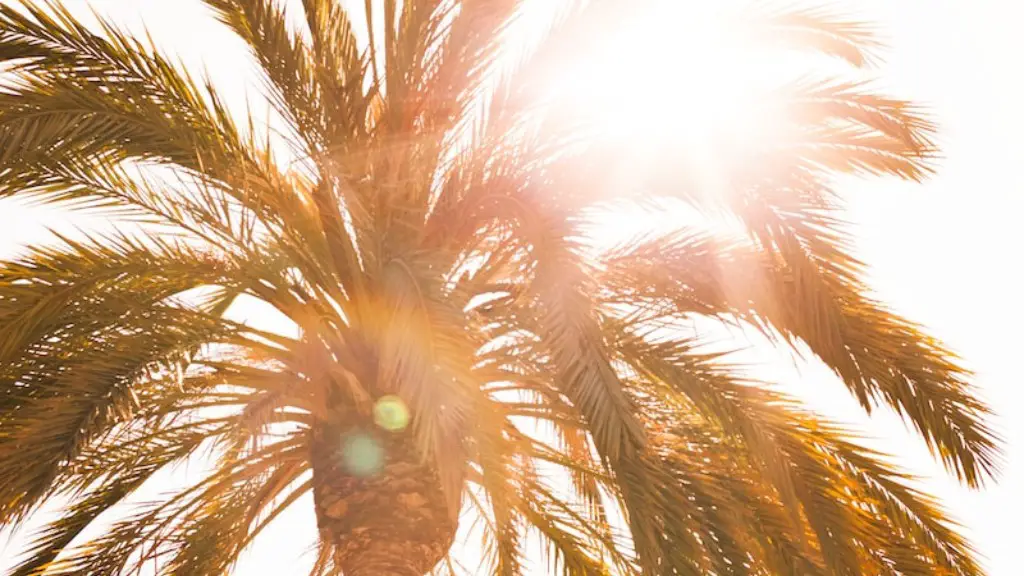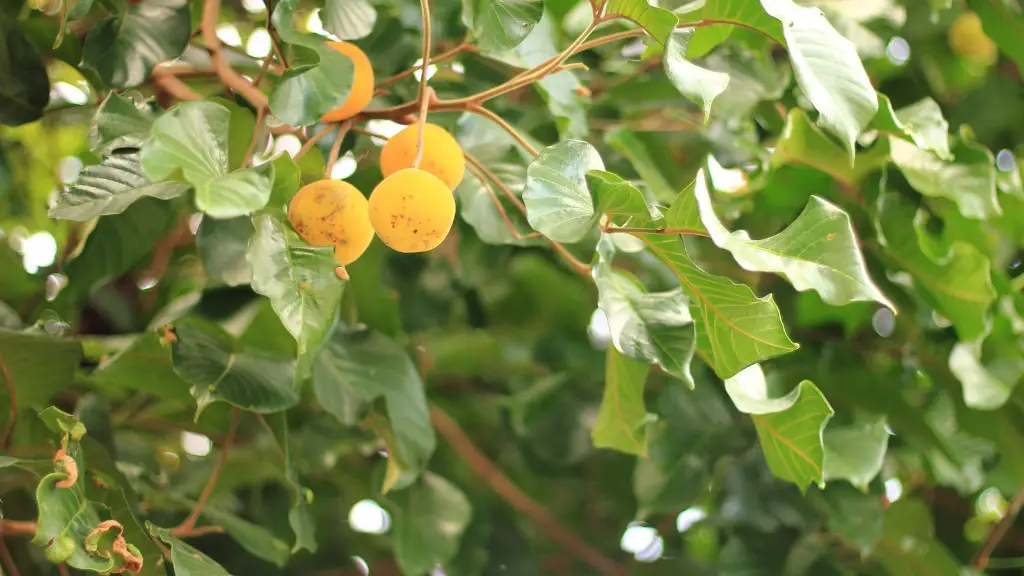Facts about Cherry Blossom Trees
The cherry blossom tree is a common symbol of beauty and life in many cultures and is a part of the natural landscape of Japan. It is scientifically referred to as Prunus serrulata and is native to the country. Although it is not just a species of tree limited to Japan, it is closely associated with the culture. Its pink and white blooms appear throughout spring, creating a stunning visual spectacle and an unforgettable olfactory experience.
The cherry blossom tree has an impressive life-cycle that includes a dormant period and annual re-growth from its root-system. This is because the tree is actually deciduous and sheds its leaves in the winter and regrows new ones when the temperature rises. This typical cycle can last for up to 15 years for a healthy tree.
The tree’s blooms are usually in full bloom for about two weeks. Many of the petals will shed shortly after blooming, so the life-cycle of the tree is considered short-term. While there can be some variation from year to year, the blooming timeframe is usually within the first two weeks of April.
Cherry blossom trees require full sun and average to above-average rainfall. It’s essential to water the trees frequently during the growing season to ensure good growth. If the soil is too dry, the trees can become stressed and lose their blossoms earlier than expected.
Cherry blossom trees prefer soil with consistent moisture levels and a moderate level of organic matter. Adding organic matter like compost or manure can help improve soil drainage and add nutrients to the trees.
It is important to keep the trees healthy and well pruned so they will be more resistant to pests, diseases, and winter damage. Pruning the trees keeps them from becoming weak and encourages healthy growth. Prune the trees at least once a year by hand or with a machine pruner in the winter.
An important factor in caring for a cherry blossom tree is to make sure it is not over- or under-watered. Over-watering can cause root rot, while under-watering can stunt growth. If a tree is planted in soil that does not drain properly, it may require additional water to stay healthy.
Pests
The cherry blossom tree is susceptible to several pests, the most common being aphids. Aphids feed on the leaves and can cause significant damage if not controlled. To help prevent the spread of aphids, remove damaged or discolored leaves and spray the tree with a pesticide or insecticide. If there are still pests in the tree, consider pruning or treating the tree with the appropriate method.
In some cases, the cherry blossom tree can also be affected by fungal diseases such as black spot. This is a common disease that is recognizable by the black spots on the leaves. To prevent the spread of this disease, make sure to avoid over-watering and prune any infected branches or leaves. To help control the spread, be sure to throw away infected branches or leaves and not compost them.
The cherry blossom tree is also susceptible to the winter moth caterpillar. This insect feeds on the blooms and leaves and can cause significant damage if not controlled. To help prevent the spread of the winter moth caterpillar, trim back the tree in the late winter and spray it with an insecticide. If the tree is still affected by this pest, consider pruning or treating the tree with the appropriate method.
In some cases, the cherry blossom tree is also subject to damage from animals such as deer. Deer are attracted to the trees’ foliage and can cause extensive damage if left unchecked. To help prevent deer from eating the trees, erect a fence around the area or use repellents such as soap or garlic. Make sure to keep the trees well watered and pruned to reduce the likelihood of animal damage.
Propagation
When propagating the cherry blossom tree, it’s important to purchase a healthy specimen that is free of pests and disease. The tree can be propagated through seeds, cuttings, or budding. Seeds can be planted in the fall and need to be kept moist throughout the winter. Cuttings should be taken in the spring and inserted into a sandy soil mixture. Budding should be done in the late summer or early fall when the buds are still green and the bark of the tree is easily lifted.
The best time to transplant cherry blossom trees is in the spring or fall when the tree is in the dormant period. The root ball should be loose and well-drained, and the tree should be planted in a sunny location with partial shade. The soil should be rich and fertile, but it should not be too fertile or too wet. To ensure healthy growth, mulch around the tree and water it consistently.
Cherry blossom trees should be fertilized annually with a fertilizer that is rich in nitrogen. Avoid fertilizers with high levels of potassium or heavy metals, as these can damage or stunt the tree’s growth. As the tree grows, it should be pruned to shape and encourage healthy growth.
Providing Shelter
Cherry blossom trees are a great way to provide shelter for birds and other wildlife. The branches provide refuge and the sweet-smelling blooms attract a variety of insects and small animals. To create more habitat for animals, add climbing vines and evergreens around the tree.
Cherry blossom trees also offer great shade, making them an ideal choice for gardens and patios. They can be planted close together to form a shady grove, or they can be spaced to provide dappled shade. If planted close together, make sure to prune the trees to provide air circulation and prevent overcrowding.
The majestic beauty of a blooming cherry blossom tree is a sight to behold. Its delicate blooms and captivating scent attract plenty of admirers. While it takes some effort to care for the trees, the rewards are well worth it. With regular pruning, watering, and fertilizing, a cherry blossom tree can provide years of enjoyment for both you and the wildlife in your garden.
Future Outlook
Cherry blossom trees are one of the least threatened plant species and are becoming increasingly popular due to their attractive blooms and symbolism. Trees are being cultivated in botanical gardens, parks and private gardens around the world, helping to spread the message of beauty and peace. As the species continues to survive and thrive, it’s likely that many more people and cultures will come to appreciate it in the future.
The variety of cherry blossom trees available has also been expanding. There are now many different types with varying bloom times, flower shapes, and colors. New cultivars have also been developed, offering even greater beauty to the species. This increased diversity helps to ensure the species’ long-term survival and encourages more people to plant cherry blossom trees as part of their landscaping.
The cherry blossom tree is an outstanding symbol of resilience and vibrancy. With proper care, it can survive and thrive in many different climates and conditions. Although it is a relatively short-term species, its beauty and symbolism are likely to remain firm favourites for many generations to come.
Appreciation and Celebrations
The cherry blossom tree is a symbol of renewal and beauty and has been celebrated for centuries. In Japan, many parks and gardens are devoted to the species and a festival is held in its honor. People from all over the country gather to witness the stunning displays of blooms and to take part in various festivities and feasts.
The cherry blossom tree has also become a popular symbol in many other countries. In Washington, DC, the trees were first planted in 1912 and the National Cherry Blossom Festival has been held every year since 1935. Similar festivals are held in Germany, Canada, France, and other countries all over the world.
The cherry blossom tree is truly a remarkable species and one worth celebrating and appreciating. Its life-cycle is both delicate and beautiful, and it provides a unique display of blooms throughout spring. Every time you witness it, you can’t help but appreciate the beauty and resilience of nature.
Conclusion
The cherry blossom tree is a beautiful species that has been celebrated for centuries. Planting and caring for them is not a complicated process, and they require minimal maintenance. With proper care and attention, they can provide years of enjoyment and serve as an emblem of beauty and resilience in any garden.





